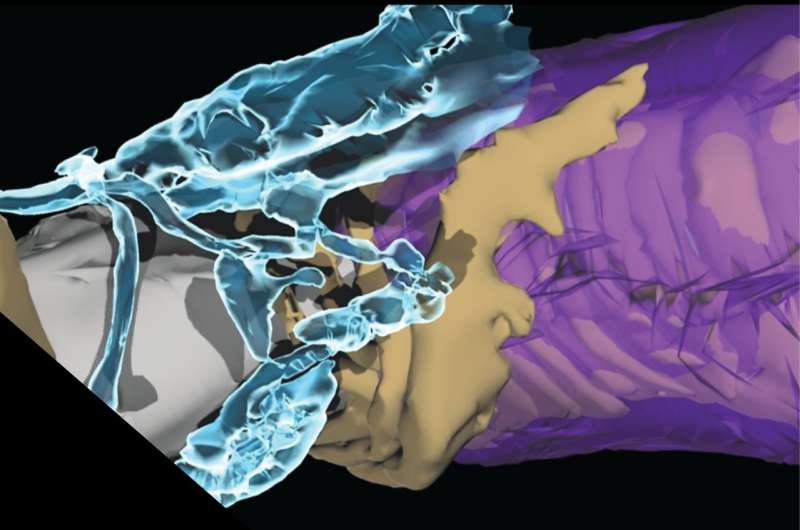Astrocytes regulate signal speeds of neurons

The transmission speed of neurons fluctuates in the brain to achieve an optimal flow of information required for day-to-day activities, according to a National Institutes of Health study. The results, appearing in PNAS, suggest that brain cells called astrocytes alter the transmission speed of neurons by changing the thickness of myelin, an insulation material, and the width of gaps in myelin called nodes of Ranvier, which amplify signals.
"Scientists used to think that myelin could not be thinned except when destroyed in demyelinating diseases, such as multiple sclerosis," said R. Douglas Fields, Ph.D., senior author and chief of the Section on Nervous System Development and Plasticity at NIH's Eunice Kennedy Shriver National Institute of Child Health and Human Development (NICHD). "Our study suggests that under normal conditions, the myelin sheath and structure of the nodes of Ranvier are dynamic, even in adults."
The brain is composed of neurons, which have extensions called axons that can stretch for long distances. Axons are wrapped by layers of myelin, which serve as insulation to increase the speed of signals relayed by neurons. Gaps between segments of myelin are called nodes of Ranvier, and the number and width of these gaps can also regulate transmission speed.
"Myelin can be located far from the neuron's synapse, where signals originate," said NICHD's Dipankar Dutta, Ph.D., the lead author of the study. "We wanted to understand how myelin, and the cells that regulate it, help synchronize signals that come from different areas of the brain."
The researchers focused their attention on perinodal astrocytes, which frequently touch nodes of Ranvier throughout the brain. In experiments using mice and rats, the researchers found that these astrocytes regulate adhesion molecules that connect myelin to axons. When these molecules are cut by the enzyme thrombin, myelin detaches from the axon, layer by layer.
The researchers blocked the ability of perinodal astrocytes to regulate thrombin and observed thinner myelin sheaths and wider nodes of Ranvier. In turn, these changes reduced the signal speeds of neurons by approximately 15 percent, which was enough to impair reflexes of mice in a vision-based test.
The findings suggest that astrocytes, by regulating signal speeds, play an important role in how the brain processes information. Furthermore, the researchers propose that blocking thrombin may help stabilize myelin. Thrombin inhibitors are already approved by the U.S. Food and Drug Administration for other uses, and the study team is currently testing their idea in a mouse model of multiple sclerosis.
More information: Dipankar J. Dutta el al., "Regulation of myelin structure and conduction velocity by perinodal astrocytes," PNAS (2018). www.pnas.org/cgi/doi/10.1073/pnas.1811013115


















